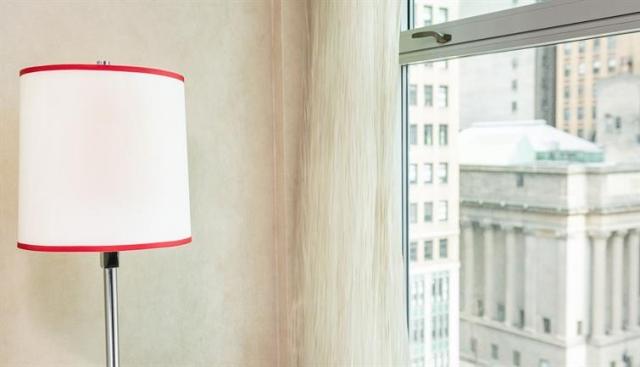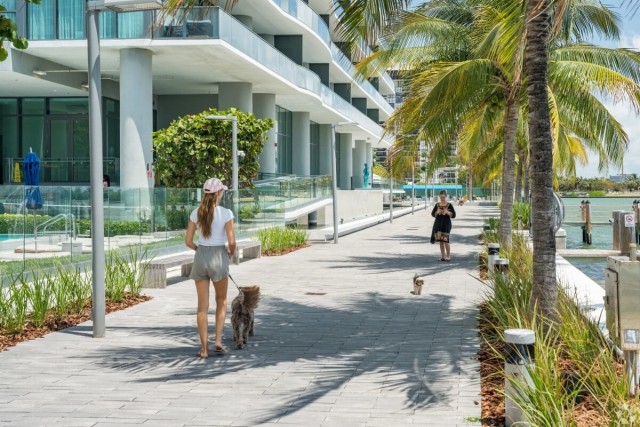A pied-a-terre is a secondary home that residents occupy part-time. Pied-a-terre is French for “foot to the ground.” The term itself dates to the 1700s and it referred to a temporary lodging, often associated with soldiers traveling on horseback. When they’d dismount for the night, they’d literally put their foot to the ground and occupy whatever temporary quarters were available. English speakers adopted the term in the early 1800s, using it to refer to secondary homes.
Pieds-a-terre are most common in large cities like Manhattan, but any secondary space you keep as a “home away from home” could be considered your pied-a-terre. Maybe even your old room in your childhood home if you visit often enough (if so, go ahead and start referring to it as your pied-a-terre … you’re welcome).
When You Might Consider a Pied-a-terre
A pied-a-terre could make sense in some situations. Perhaps you work in one state but live in another. According to the US Census Bureau, almost four percent of US workers commute to a different state. If you are one of them, having a pied-a-terre close to work and traveling home on weekends would save time on your commute.
You might also consider renting a pied-a-terre when moving to a new location. Perhaps you’ll want to travel back and forth for a while to learn the area and get established. It may also help if you are looking for a job and want a local address.
If you travel to the same destination frequently for business, you might find renting a pied-a-terre is less expensive over time than a hotel. You’ll likely have a kitchen in your pied-a-terre, saving you from having to dine out for every meal while you are staying in your temporary location. It’s also more convenient since you can leave clothing, personal items, and cookware in the space, making it less cumbersome to travel back and forth, and you won’t have to deal with checking in and out of a hotel every time you’re in town.
Perhaps you live in the suburbs but work in the city and traffic is an issue. If you can reach the office in 15 minutes on the weekend but it takes an hour (or more!) during the week, you might consider a pied-a-terre. Having a place close to work would free up weekday hours you might otherwise spend sitting in gridlock.
Another reason you might want a pied-a-terre is if you split your time between two cities. If you spend the summer months in one place and the colder months in another, having a pied-a-terre in your secondary city makes sense.
If you are the parent of a college student, imagine being able to visit them any time you want and having a place of your own close to campus. Surprise drop-ins are the best!
While a pied-a-terre isn’t usually considered a vacation home, it is often used for leisure activities. For example, if you enjoy attending concerts or plays in the city but don’t like to travel home late at night, having a pied-a-terre in the city might be a solution.
Perhaps there’s a special place you like to vacation, and you try to get there as often as possible – maybe even every weekend. In this case, a pied-a-terre would cost less over time than getting a hotel every time you visit.
Is a pied-a-terre right for me?
Having one home is a lot to keep up with. Trying to maintain two residences isn’t easy, but if you would find it a money-saver or a time-saver, it might be worth it. Most pieds-a-terre are small – think micro-apartment, small studio, efficiency, or even a room for rent.
When looking for a pied-a-terre, consider looking for a furnished apartment. This way, you won’t have to worry about finding necessary furniture like a bed or couch. Some furnished apartments even provide basic cookware and appliances like a coffee maker or a microwave.
If you will be applying for a second lease, keep in mind that your existing rental will likely show up on your background check. While it’s fine to rent multiple apartments, your landlord will want to make sure you have enough income to support both places. If you own a home and are paying a mortgage, those costs will also be considered when you look for a pied-a-terre.
How to Find a Pied-a-terre
Finding a pied-a-terre is as easy as finding any apartment, with a few caveats. Some properties might not allow an apartment to be used as a pied-a-terre, such as in some New York City co-ops. In these buildings, they may require that the apartment be your primary residence. This is because they don’t want an apartment sitting empty most of the time, but would rather have active, present residents. Make sure that using your apartment as a pied-a-terre is allowed before signing a lease.
You probably won’t be able to sublet your pied-a-terre, so keep this in mind as you search. Most condo and apartment communities have policies around subletting, and even if it is allowed, they will likely require a longer lease term (perhaps six months or even a year, in some cases), which could interfere with your ability to use the space yourself. Be sure to ask the leasing agent about subletting policies if this is something you are considering.
When searching for any rental, even a pied-a-terre, be sure to find one that fits your needs. For example, if you are planning to travel with your pet, you’ll want to search for pet-friendly apartments. If you enjoy exercising daily, make sure the apartment community offers amenities to accommodate those activities, such as a fitness center.
When thinking about what amenities you might need, consider how you’ll be utilizing the space. If you are using your pied-a-terre as a getaway destination in your favorite vacation spot, you might want a swimming pool or other luxury amenities. If you are only using the apartment during the workweek as a place to sleep when you don’t want to commute home, you might rarely (if ever) take advantage of those amenities.
Can I afford a pied-a-terre?
There’s no doubt – maintaining two residences can get expensive. But it could make financial sense in some circumstances. For example, you might be able to find a small micro or studio apartment to use as a pied-a-terre for less than it would cost over time to constantly pay for hotel rooms. The convenience of not having to pack suitcases every time you need to travel might make it worth the added expense, as well.
When looking at your budget, keep in mind that you shouldn’t spend more than 30 percent of your gross income on rent. In some cases, the apartment community might deny your application if your income doesn’t meet this threshold.
In addition to the extra rent payment, you’ll want to consider the cost of utilities and other expenses like monthly pet fees and renters insurance.
Things to Consider Before Renting a Pied-a-Terre
In addition to determining if a pied-a-terre is affordable and right for you, you’ll also want to consider if it’s worth being responsible for two homes. In any apartment, things inevitably break or wear out. If you are there to deal with the issue, it’s as simple as fixing it yourself or contacting maintenance.
But since a pied-a-terre isn’t your primary home, situations that might require emergency maintenance when you aren’t there, such as a water leak or burst pipe, become trickier. Discuss this with the landlord or property manager to determine how and when they can enter your apartment, especially if there’s no way for them to know if you are home or not.
Consider finding someone to check your apartment periodically when you aren’t there. Not only does having someone coming and going make your apartment look less empty, this person can check to make sure all is well in your pied-a-terre.
You might want to consider turning off/unplugging whatever you can when you leave your pied-a-terre for an extended period. This will cut down on expenses and will also help prevent accidents. Other things to take into consideration include pest control, cleaning, garbage collection, and mail/package pickup.
Once you’ve weighed the benefits and drawbacks of renting a pied-a-terre, you’ll have a better idea if it is something that would work for your situation. Bonne chance, locataire!






